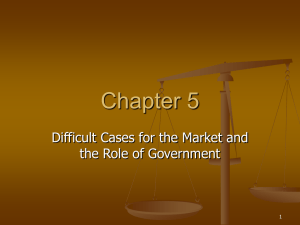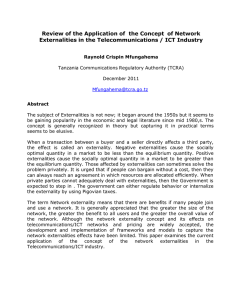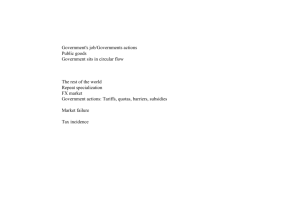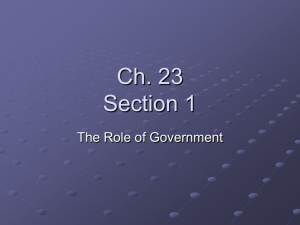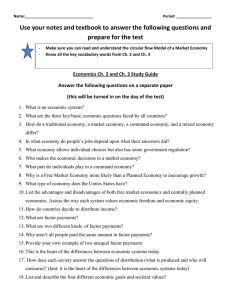unit 5
advertisement
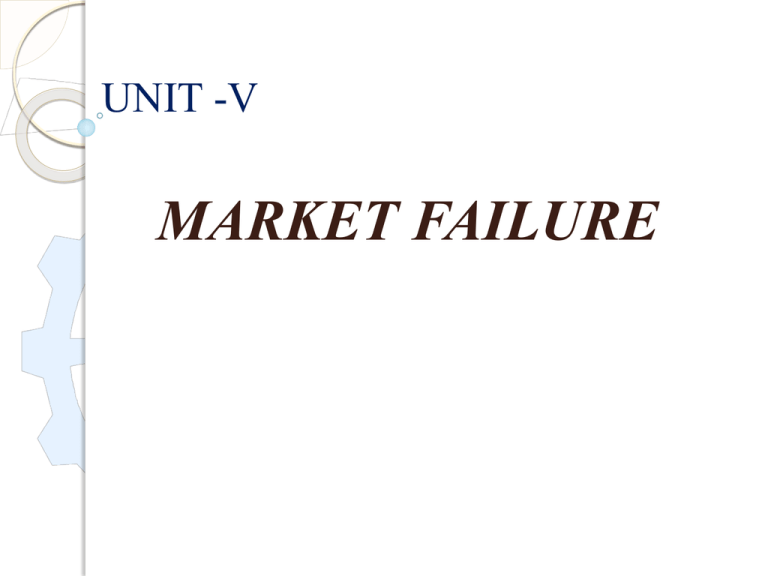
UNIT -V MARKET FAILURE MARKET FAILURE :Market failure occurs when private transactions result in a socially inefficient allocation of goods, services & productive resources. There are three sources of market failure:Market Power. Externalities. Public goods. Another source of market failure asymmetric Information. Market Power :Consumer & Producer surplus:Consumer surplus is the difference between what consumers are willing to pay for a given quantity of a good or service and the amount they actually pay. Producer surplus is the difference between the total revenues earned from the production and sale of a given quantity of output and what the firm would have been willing to accept for the production and sale of that quantity of output. Externalities :- An externality is a cost or benefit resulting from a market transaction that is imposed upon third parties. These third party effects are called externalities. Third parties are positively or negatively affected by a market transaction. There are two types:- 1.External Economies or Positive Externalities in Production. 2.External Diseconomies or Negative Externalities in Production. Transaction costs defined as the resources necessary to transfer, establish & maintain property rights. Coase theorem:A market determined solution to the externality problem. The theorem states that the assignment of well defined private property rights will result in a socially efficient allocation of productive resources and a socially optimal level of goods & services. Conceptually it fails for the following reasons:1.Externalities are defined by Transactions Costs. 2.Transaction costs are ubiquitous. 3.Definition problems. Public Goods :The possession of certain properties that some goods are called public goods. They are produced in the public sector or private sector. Characteristics of public goods are :1.Non-Rivalry in consumption. 2.Non-Excludiability. 3.Free-Rider’s Problem & Public Goods. 4.Public goods & Pareto Efficiency. Concept of Asymmetric Information:Imperfect information. 2. Asymmetric information. 1. Equilibrium in a market with asymmetric information:1. Adverse selection. 2. Appraisal. 3. Screening. Market intervention by Government 1. 2. 3. 4. Four basic tools in change economic outcomes:Taxation & Subsidies. Public sector production. Antitrust Legislation. Regulation. Antitrust Legislation:Antitrust legislation represents government intervention in the marketplace, such as making it illegal for firms in an industry to engage in collusive pricing & output practices, to prevent industry abuse of market power. Important pieces of antitrust legislation are:1.Sherman Act 1890. 2.Clayton Act 1914. 3.Robinson-Patman Act 1936. 4.Wheeler-Lea Act 1938. Regulation :Regulation into two types:1.Economic regulations. 2.Social regulations. Thank You


